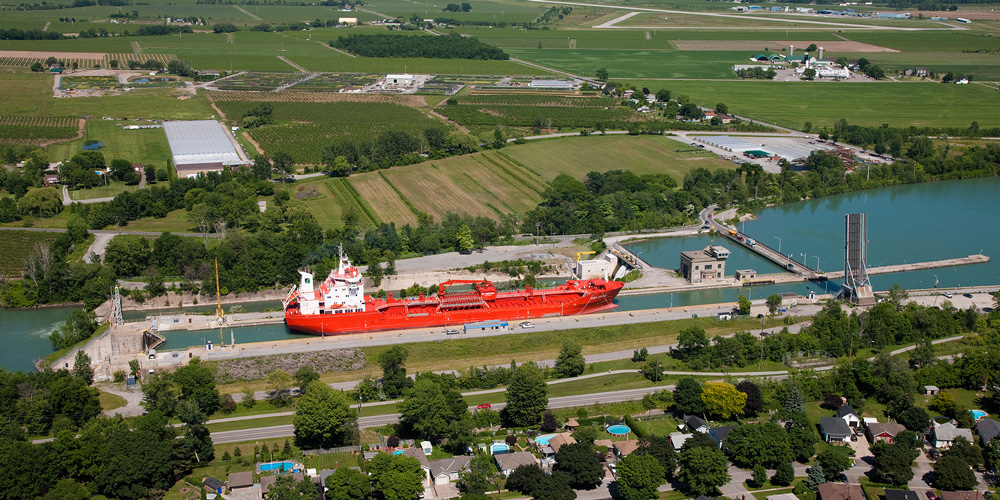Top Hat Ceremony at Welland Canal Officially Opens 44th Shipping Season on St. Lawrence Seaway
March 26, 2002
St. Catharines, March 26, 2002 – Captain Hugh Pink of the Lower Lakes Towing vessel M/V Mississagi was presented with the ceremonial top hat this morning, when the St. Lawrence Seaway officially re-opened for its 44th consecutive shipping season. Guy Véronneau, President of The St. Lawrence Seaway Management Corporation, declared the St. Lawrence Seaway and the Welland Canal officially open. The ceremony was attended by Transport Minister David Collenette, Albert Jacquez, Administrator of the U.S. Saint Lawrence Seaway Development Corporation, local politicians and Captain Scott Bravener, President and CEO of Lower Lakes Towing Ltd., owner of the first vessel to pass through the locks this year.
“In many ways, our Seaway has become a world leader in the use of technology to improve marine transportation,” said Mr. Véronneau. “Just to give two striking examples: the infrastructure for automatic vessel identification (AIS) is now in place. The system will be extensively tested this season and be made mandatory next year. It is a most modern system and, linked with DGPS, it will eventually revolutionize navigation in restricted waters. Meanwhile, the U.S. and Canadian Coast Guards, as well as the International Maritime Organization, are working to implement AIS in their jurisdictions by 2004/2005. And the binational Seaway Web site we launched last year has an increasing number of new features and is proving extremely popular, regularly receiving more than 50,000 hits a month. This year, we’re offering e-business services, and an e-mail broadcasting feature so that Seaway users will be able to receive our information electronically, rather than by slower mail.”
Measured against the last five years, the 2001 navigation season was an average one for the Welland Canal and the Seaway generally. Combined Seaway cargo reached 41.71 million tonnes, a drop of 10% from 2000 levels caused by a sluggish North American economy, less activity in the steel industry, with corresponding reductions in related commodities (iron ore, coal and steel imports), and fewer Canadian and U.S. grain export shipments. Despite the reduced traffic, Mr. Véronneau pointed out, “The Seaway has met its business plan targets for the fourth year in a row, and we plan to do so again this year, though we expect no better than average traffic to continue. Again this year we are able to offset our mandatory 2% toll increase with a 1.5% rebate.”
This year, as in 2001, the Seaway hopes to be able to maintain its maximum draft of 26’3″ all season, despite low water levels in the Great Lakes at the moment. A feasibility study on increasing vessel draft has been completed, and some maintenance dredging planned this year will enable an increase of 3″ in 2003. Each additional inch of draft boosts the cargo a Seaway vessel can carry by 100 tonnes. In addition, the SLSMC is involved in a number of bi-national projects involving many stakeholders and partners in the Great Lakes/St. Lawrence Seaway system to improve navigation and carry out long-term planning for the waterway. This year, it hopes to launch an important study on the modernisation of navigation services, with the U.S. St. Lawrence Seaway Development Corporation, both Coast Guard organisations, the pilotage agencies, Transport Canada and Fisheries and Oceans. SLSMC also have identified a need for a feasibility study to determine the future direction of the Great Lakes/Seaway System, and are recommending Canadian participation with the U.S. Army Corps of Engineers in such a study.
Opened in 1959, the 3,700 kilometre St. Lawrence Seaway allows uninterrupted navigation nine months of the year from Duluth, Minnesota, and Thunder Bay, Ontario, to the Gulf of St. Lawrence.






